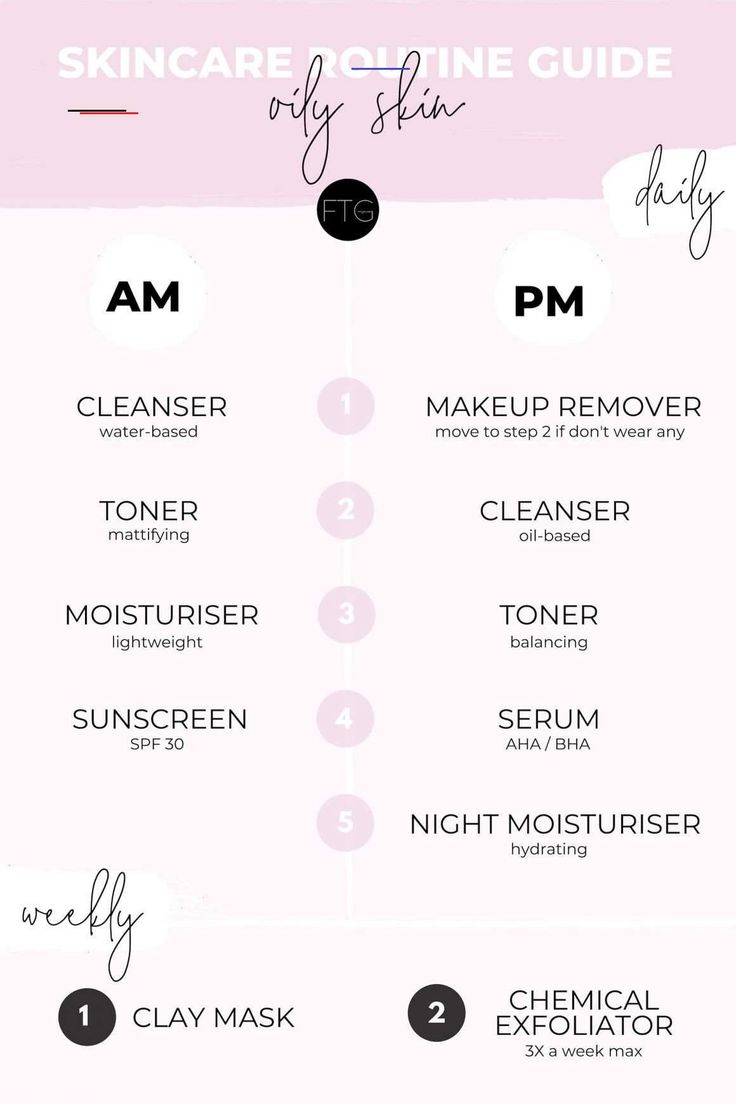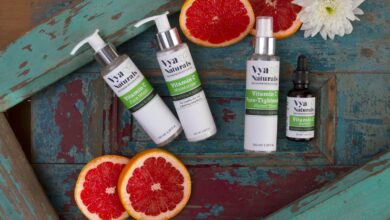
If you have combination skin, you know firsthand the struggle of dealing with both oily and dry areas. But fear not! With the help of Stylish.ae’s expert tips, you can achieve balanced care for your combination skin and embrace your natural radiance. From skincare routines to product recommendations, this article will guide you on your journey to healthier, more beautiful skin. Get ready to say goodbye to the woes of combination skin and hello to a more confident and radiant you!
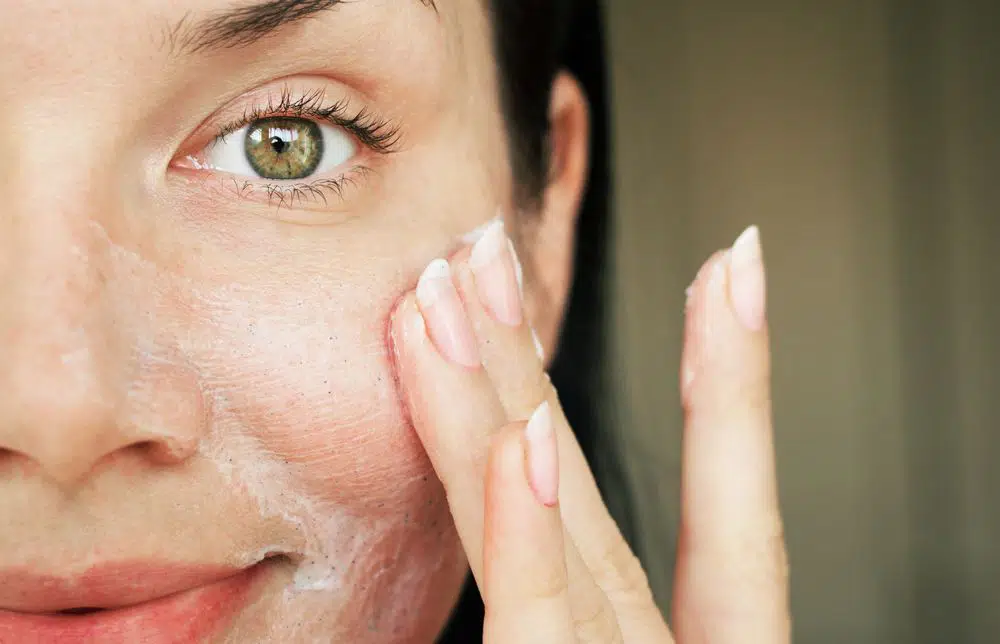
Understanding Combination Skin
What is combination skin?
Combination skin is a common skin type characterized by having both dry and oily areas on the face. This means that some areas, such as the cheeks, may feel dry and rough, while other areas like the forehead, nose, and chin (also known as the T-zone) tend to be oily and prone to breakouts. Understanding your skin type is essential for effective skincare, as it helps you choose the right products and develop a suitable skincare routine.
Common characteristics of combination skin
Combination skin often exhibits clear signs that can help you identify it. One of the most noticeable characteristics is having enlarged pores in the T-zone, which can often become congested with excess oil and dirt. Additionally, combination skin may experience occasional breakouts, especially in the oily areas of the face. On the other hand, the dry areas of combination skin may feel tight, flaky, or even itchy at times. Identifying the unique characteristics of your skin can help you tailor your skincare routine to address its specific needs.
Identifying Your Skin Type
Skin type quizzes
If you’re unsure about your skin type, try taking a skin type quiz. These online quizzes can help you understand your skin better by asking you questions about your skin’s characteristics and behavior. They often take into account factors such as oiliness, dryness, sensitivity, and pore size to determine your skin type accurately. While a skin type quiz can provide a rough estimation, it is always best to consult a dermatologist for a professional assessment.
Consulting a dermatologist
To accurately identify your skin type, consider scheduling an appointment with a dermatologist. Dermatologists are trained professionals who can evaluate your skin’s characteristics, perform tests, and provide expert advice on the most suitable skincare products and routines for your specific needs. They can also address any underlying skin concerns or conditions and recommend treatments or modifications to your skincare routine to achieve optimal skin health and balance.
Importance of Balanced Care
Why is balanced care essential for combination skin?
Balanced care is critical for combination skin because it helps maintain harmonious oil production throughout the face. When the oily areas of the T-zone are deprived of moisture, they can overcompensate by producing more oil, leading to clogged pores and breakouts. Similarly, neglecting the dry areas can result in tightness, flakiness, and potential irritation. By providing balanced care, you can keep your skin hydrated and nourished while preventing excessive oiliness or dryness.
Benefits of balanced care
Optimal skincare for combination skin achieves a delicate balance between hydration and oil control. By following a balanced skincare routine, you can enjoy several benefits. Firstly, balanced care helps regulate oil production, reducing shine in the T-zone and minimizing breakouts. Secondly, well-moisturized dry areas will feel more comfortable and less prone to itchiness or flakiness. Lastly, balanced care promotes overall skin health, resulting in a more radiant and even complexion.
Cleansing Tips
Gentle cleansers for combination skin
Choosing the right cleanser is crucial for combination skin, as it sets the foundation for your skincare routine. Look for gentle cleansers that effectively remove impurities without stripping the skin of its natural oils. Opt for a pH-balanced formula that is free from harsh ingredients, such as sulfates or alcohol, as these can exacerbate dryness or irritate the oily areas of your face. Cream or gel cleansers are often suitable choices for combination skin, as they provide a gentle cleanse while maintaining the skin’s moisture balance.
Double cleansing technique
To ensure thorough cleansing without compromising your skin’s moisture balance, consider incorporating the double cleansing technique into your skincare routine. Double cleansing involves using an oil-based cleanser or micellar water as the first step to remove makeup, sunscreen, and excess oil. Follow it with a water-based cleanser to deep clean the pores and remove any remaining impurities. This method effectively removes all traces of dirt and makeup while preparing the skin for the next steps of your skincare routine.
Avoiding harsh ingredients
Harsh ingredients can disrupt the delicate balance of combination skin, so it’s important to avoid them in your cleansers. Ingredients like sulfates, fragrances, and alcohol can strip away the skin’s natural oils, leading to increased dryness or oil production. Instead, opt for cleansers with soothing and nourishing ingredients such as aloe vera, green tea extract, or hyaluronic acid. These gentle ingredients will cleanse your skin effectively while providing hydration and promoting balance.
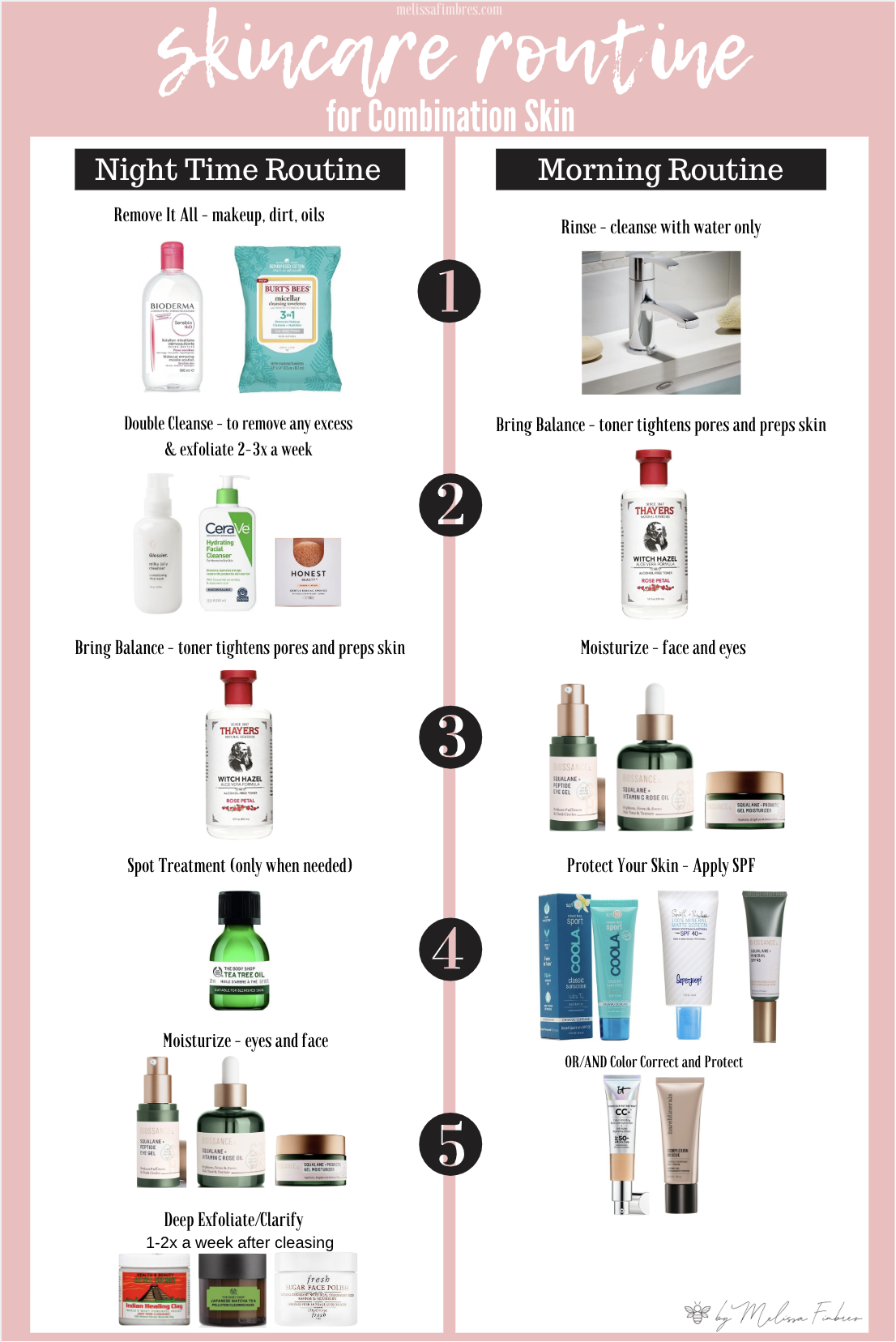
Toning and Hydration
Choosing the right toner for combination skin
Toning is an essential step in any skincare routine, especially for combination skin. Look for toners that are alcohol-free and contain ingredients like witch hazel or rosewater. These ingredients help balance the skin’s pH, tighten pores, and remove any remaining traces of dirt or cleanser. Avoid harsh or astringent toners that can overly dry out the skin or irritate the dry areas. Instead, choose a toner that provides hydration and soothes the skin while preparing it for the next steps of your skincare routine.
Importance of hydration for combination skin
Hydration is crucial for combination skin, as it helps maintain a healthy moisture balance and prevents excessive oiliness or dryness. Look for lightweight, oil-free moisturizers that are formulated specifically for combination skin. These moisturizers can provide hydration to the dry areas while being lightweight enough not to overwhelm the oily areas. Hyaluronic acid and ceramides are excellent ingredients to look for, as they can effectively hydrate the skin without adding extra oil or clogging the pores.
Moisturizing Dos and Don’ts
Best moisturizers for combination skin
When choosing a moisturizer for combination skin, it’s important to find a product that strikes the right balance between hydration and oil control. Look for moisturizers with a lightweight, non-greasy texture that can provide adequate moisture to the dry areas without leaving a heavy or oily residue. Gel-based or water-based moisturizers are often suitable options for combination skin, as they can provide hydration without clogging the pores or exacerbating oiliness.
Avoiding heavy moisturizers
While it’s important to moisturize combination skin, it’s equally crucial to avoid heavy, greasy moisturizers that can overwhelm the oily areas of the face. Heavy moisturizers can lead to increased oil production and clogged pores, resulting in breakouts or a shiny complexion. Instead, opt for oil-free or non-comedogenic moisturizers that are specifically formulated for combination or oily skin. These moisturizers are designed to provide hydration without clogging the pores or causing excess oiliness.
Importance of SPF in moisturizers
Sun protection is essential for all skin types, including combination skin. Look for moisturizers that offer broad-spectrum protection with at least SPF 30. By choosing a moisturizer with built-in sunscreen, you can simplify your skincare routine and ensure that your skin is protected from harmful UV rays. Sunscreen also helps prevent premature aging, hyperpigmentation, and other damage caused by sun exposure. Remember to apply sunscreen generously, even on cloudy days or when staying indoors for extended periods.
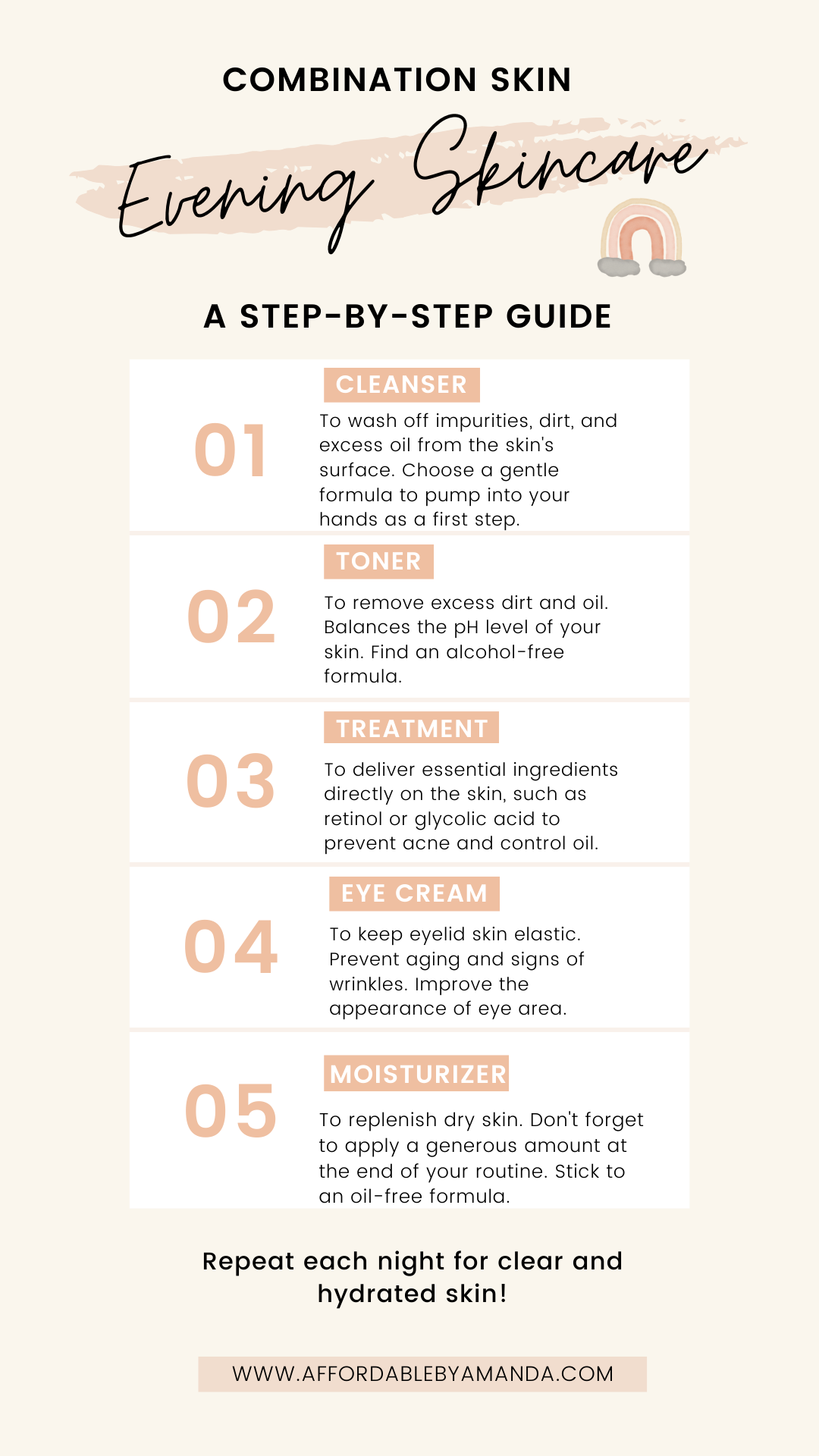
Targeted Treatments for Combination Skin
Addressing dry patches
Dry patches can be a common concern for those with combination skin. To address dry patches, incorporate targeted treatments such as hydrating serums or moisturizing masks into your skincare routine. Look for products that contain moisturizing ingredients like hyaluronic acid, glycerin, or ceramides, as these can help restore and lock in moisture. Apply these treatments to the dry areas of your face and follow up with a suitable moisturizer to hydrate and nourish the skin.
Dealing with oily T-zone
For those with combination skin, managing the oiliness in the T-zone can be a challenge. To control excess oil production, consider using oil-absorbing sheets throughout the day to remove shine without stripping the skin. Another effective option is to incorporate a mattifying primer into your makeup routine. These primers can help minimize oiliness and create a smooth base for foundation, keeping your T-zone shine-free for longer periods.
Treating blemishes
Combination skin is susceptible to blemishes, especially in the oily areas of the face. To treat blemishes effectively, look for products that contain ingredients like salicylic acid or tea tree oil. These ingredients help unclog pores, reduce inflammation, and promote healing. Spot treatments or serums formulated with these blemish-fighting ingredients can be applied directly to the affected areas to address breakouts without causing excessive dryness or irritation.
Exfoliation Tips
Choosing the right exfoliator for combination skin
Exfoliation is an essential step in any skincare routine, including for combination skin. Look for exfoliators that are gentle and suitable for regular use. Avoid harsh scrubs or physical exfoliants that can aggravate the skin or cause micro-tears. Instead, opt for chemical exfoliants like AHAs (alpha hydroxy acids) or BHAs (beta hydroxy acids), which effectively remove dead skin cells and unclog pores without being overly abrasive. These chemical exfoliants can help achieve a smoother, more even complexion while promoting a balanced skin texture.
Frequency of exfoliation
The frequency of exfoliation will vary depending on your skin’s tolerance and needs. For combination skin, it’s generally recommended to exfoliate two to three times a week. However, if your skin is more sensitive or prone to dryness, you may need to reduce the frequency to once a week. Pay attention to how your skin reacts to exfoliation and adjust the frequency accordingly. Over-exfoliation can lead to irritation and dryness, while under-exfoliation may result in clogged pores and dullness. Finding the right balance is key.
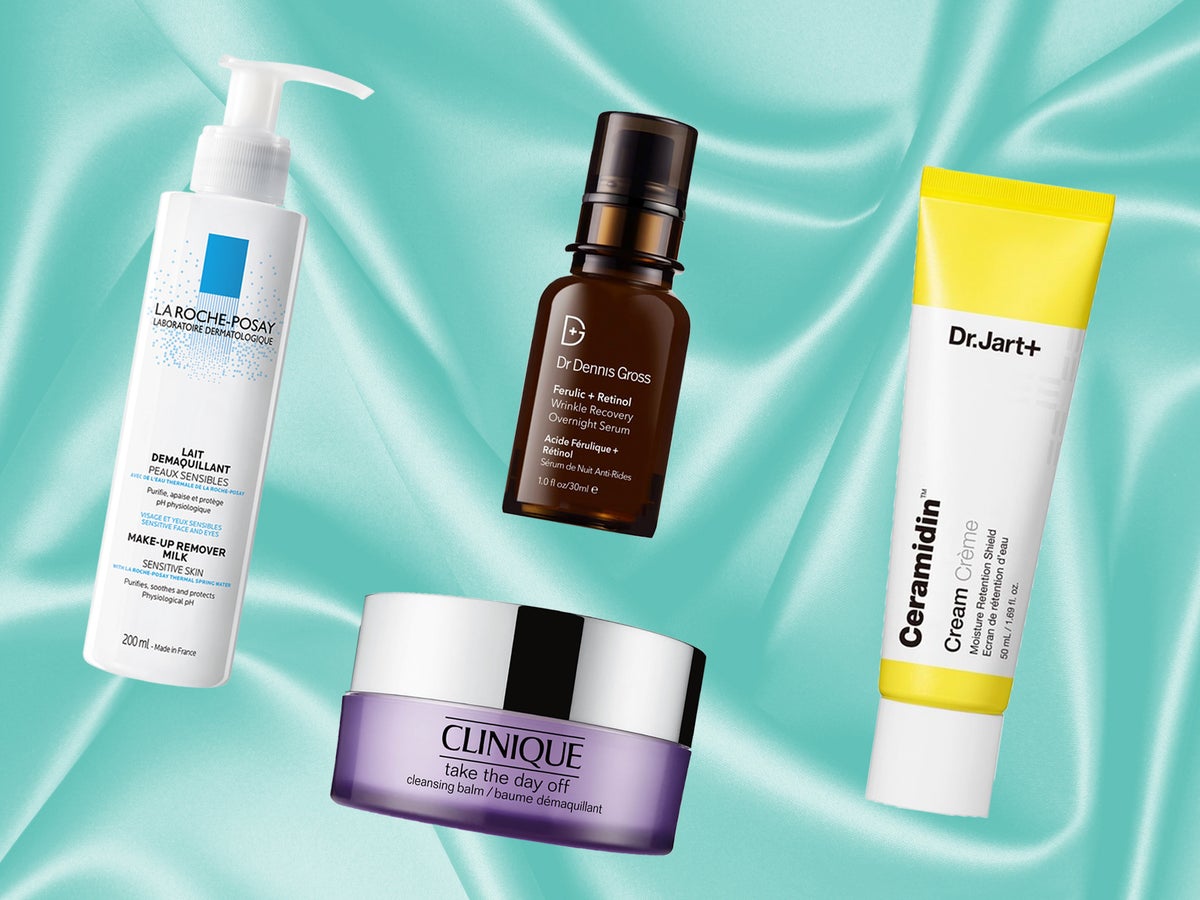
Protecting Your Skin
Importance of sunscreen
Sunscreen is a vital step in any skincare routine, regardless of your skin type. UV rays can cause damage to the skin, leading to premature aging, hyperpigmentation, and an increased risk of skin cancer. Apply a broad-spectrum sunscreen with at least SPF 30 daily, even on cloudy days or during the winter months. Make sure to cover all exposed areas, including the face, neck, and any other body parts that are not protected by clothing. Regular use of sunscreen will help protect your combination skin and maintain its health and appearance.
Choosing a suitable sunscreen for combination skin
When selecting a sunscreen for combination skin, opt for lightweight, non-greasy formulas that won’t clog pores or add excess oil. Look for sunscreens labeled as “oil-free” or “non-comedogenic.” Gel or lotion sunscreens are often suitable choices for combination skin, as they provide adequate sun protection without a heavy or sticky feel. Additionally, consider sunscreens that offer a matte finish to help control shine in the T-zone throughout the day.
Makeup Tips for Combination Skin
Primer for combination skin
Using a primer before applying makeup can help create a smooth canvas and extend the longevity of your makeup. When choosing a primer for combination skin, look for mattifying or oil-controlling formulas that can help minimize shine in the T-zone. Primers with pore-blurring properties can also help reduce the appearance of enlarged pores. Apply a small amount of primer to the T-zone and gently blend it outwards to create a seamless base for your foundation.
Choosing the right foundation
When it comes to foundation for combination skin, opt for lightweight or oil-free formulas that provide coverage without adding excess oil or clogging the pores. Look for foundations labeled as “matte” or “long-lasting” to help control shine throughout the day. Another option is to use a sheer or lightweight foundation on the dry areas of your face and apply a mattifying powder foundation or a light dusting of setting powder to the T-zone to maintain balance and extend the wear of your foundation.
Controlling shine throughout the day
To control shine in the T-zone throughout the day, carry oil-absorbing sheets or blotting papers with you. Gently press the sheets onto the oily areas to remove excess oil and mattify the skin without disturbing your makeup. Avoid using additional powder throughout the day, as it can lead to a cakey appearance. Instead, use blotting papers as needed and finish with a few spritzes of a hydrating facial mist to refresh and balance your combination skin.
Combination skin requires a delicate balance of care to maintain its health and appearance. By understanding your skin type, choosing the right products, and following a consistent skincare routine, you can achieve a harmonious and radiant complexion. Embrace your combination skin and enjoy the journey towards achieving a balanced and beautiful you!
